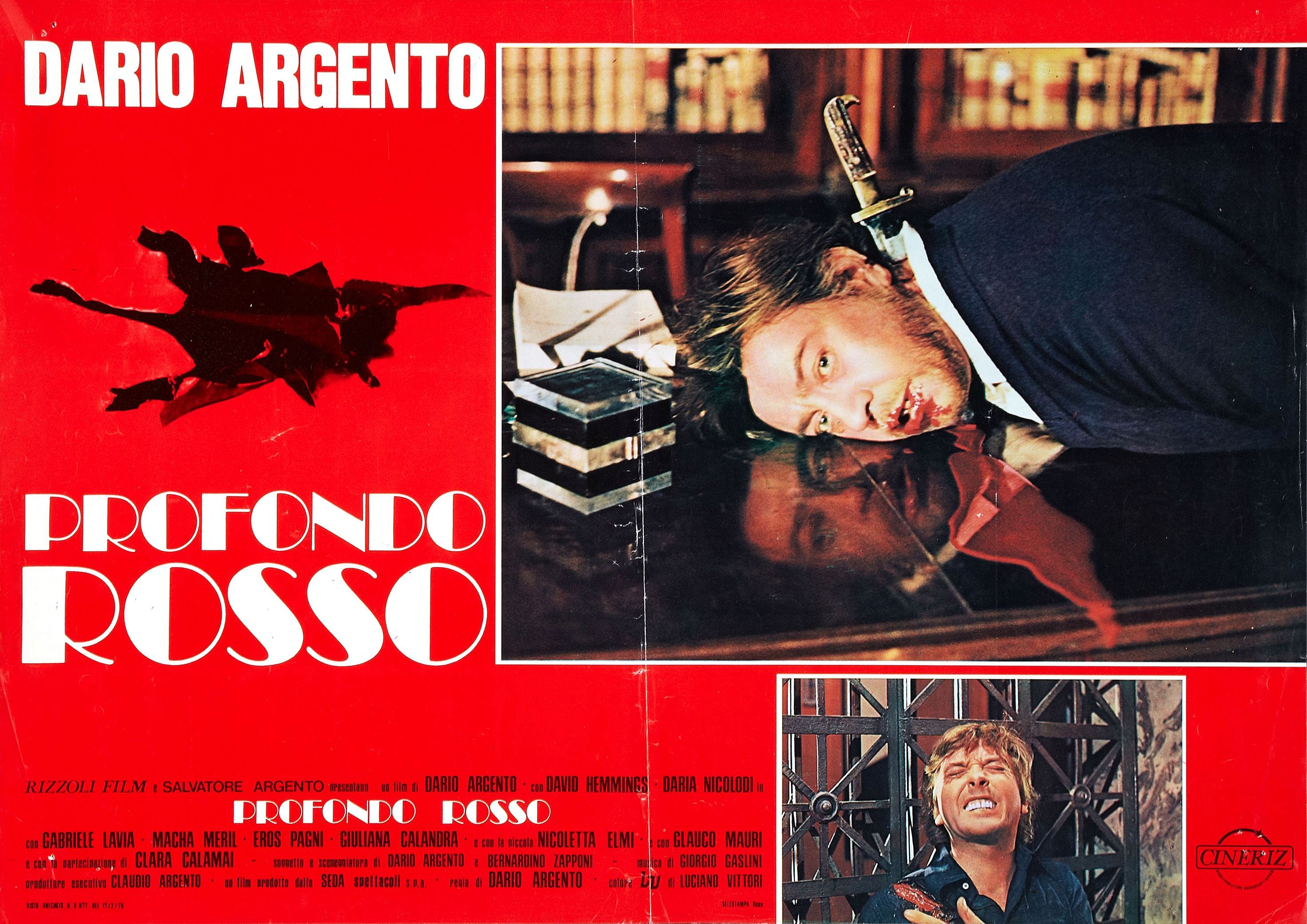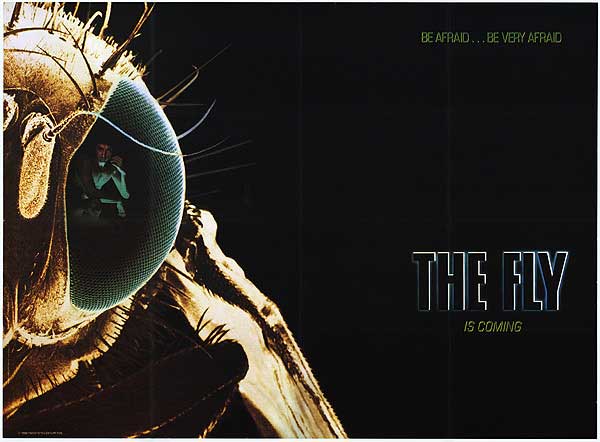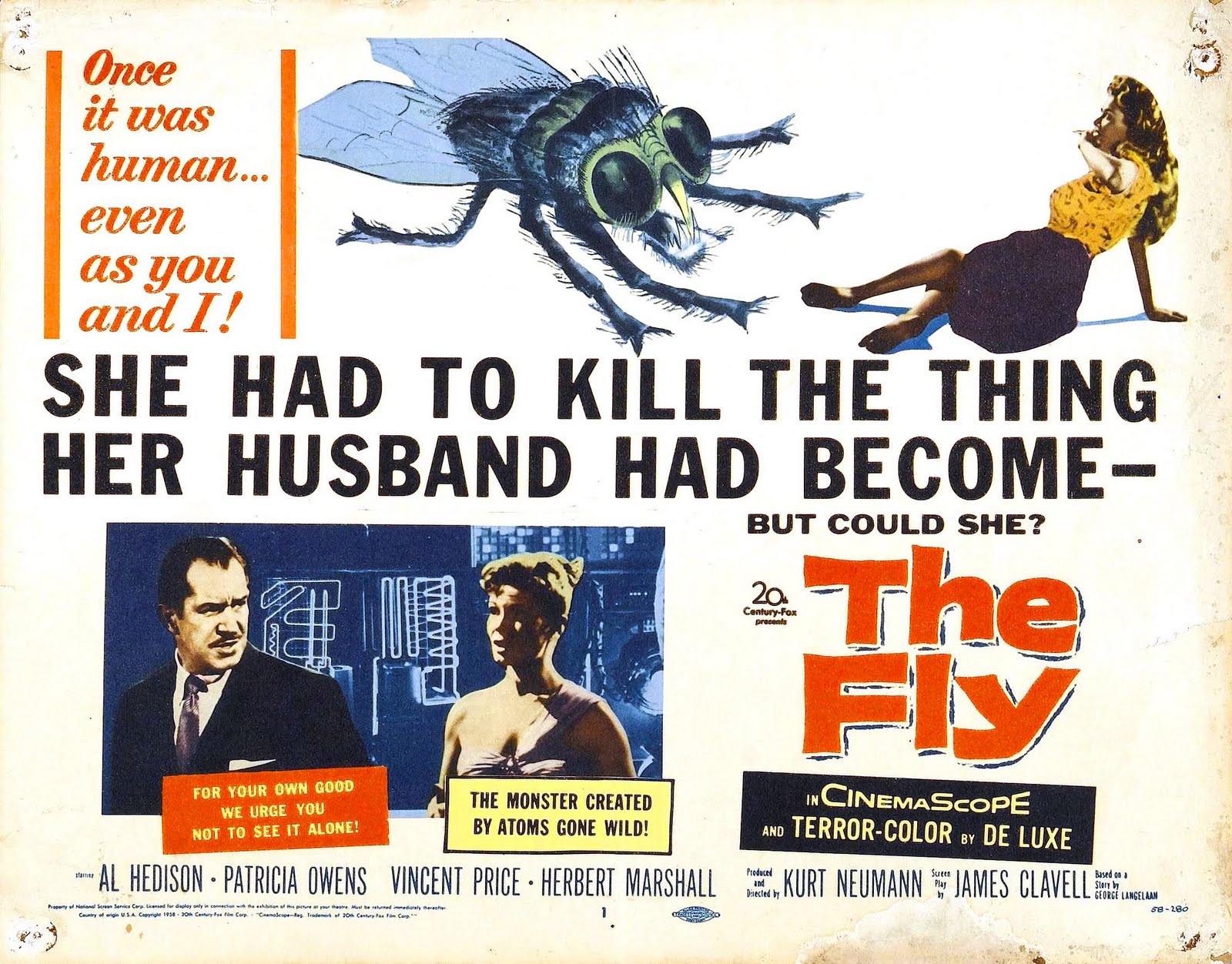
31+ Days of Horror. 33 Horror Movies. 33 Reviews. Hooptober Challenges and Bonus Tasks.
View my 2016 Cinema Shame/Hoop-Tober Watch Pile Shame-a-thon Statement here.
Nature of Deep Red Shame:
What kind of moviewatcher loves Dario Argento but somehow overlooks Deep Red? SHAMEFUL.
Hoop-tober Challenge Checklist:
Decade – 1970’s
Master Classers: Argento
The Advance Word: After Suspiria, fans claim Deep Red is the best Argento. Maybe to support my unpopular argument that Opera was the 2nd best Argento, I justified not watching the movie that would prove me wrong. Subconsciously, of course. Because that would be super dumb to not watch a good movie to support a misguided theory.
#14. Deep Red (1975)
I’ve grown weary of the argument that Dario Argento is a lesser director because he emphasizes style over substance. The giallo, by nature, requires an emphasis on the visual and an ability to twist standard genre elements into something striking and unique. The genre relies on such a strict set of identifying characteristics that creativity and excellence within these constraints manifests in the form of camera angles, color, light and shadow, and inventive slasher setpieces. No matter the intelligence of the narrative, story takes a backseat to visual panache. If you’re someone who watches a giallo film and laments a lack of a proper narrative in the face of stylistic artistry, maybe the genre just isn’t for you.
Not that there’s anything wrong with that.
I don’t really care for Werewolf movies other than American Werewolf in London. We’ve all got our quirks.
Deep Red excels precisely because Argento forces his inventive camerawork to the foreground. He lingers on interesting gothic architecture, dark city streets, unsettling imagery. During his scenes of murder, rapid editing, point-of-view and tracking shots, and blazing colors (usually hypercolor red) tell stories within stories.
Argento makes us believe we’ve seen horrors that sometimes haven’t even appeared on camera because we anticipate the impact and the aftermath of the blade. As gory as Argento can be, the trauma generally occurs in the mind. Anticipation, tension, the cinematic language of a slasher, the groundwork of which is laid by the score. Tension in a giallo, or more broadly the slasher genre, does not exist without a great score.

Deep Red benefits greatly from its score — a score that might even sound overly familiar because of the ways that Goblin inspired John Carpenter’s iconic score for Halloween. I don’t think it’s possible to overestimate the value of Goblin in the Argento filmography. The band scored three of Argento’s biggest successes in Deep Red, Suspiria and Phenomena. Take a listen below:
In his early masterworks, Argento combines these artificial elements of cinema — the sights and sounds, the cinematic language of the slasher — into a nightmarish synesthesia. In Deep Red (and some of his other films as well), Argento poses questions concerning perception and reality. Within Deep Red the question must be answered by the main character — what has he witnessed? — but Argento has also directed this question at the audience.
Cinema, as an artificial medium, offers us the ability to explore these questions every time we turn on a film. Argento places the perception vs. reality dynamic front and center. He directs dreamlike films, filled with loose logic and visual and aural connectivity. Red herrings, misdirection come part and parcel with a genre-style whose focus and mystery must remain, by nature, on the identity of the killer.
In Deep Red, David Hemming’s orchestra conductor Marcus Daly tells his musicians to be less perfect, to embrace the chaos of music in order to achieve something more beautiful that the notes on the page. Stunted order vs. the beauty of chaos and uncertainty. Argento addresses his audience here; he’s directing our reading of Deep Red, not as realism, but as a fantastical, almost improvisational artistic creation.

In the above scene, Marcus converses with his stumbledown drunk friend Carlo. Marcus has just witnessed the murder of a woman in an apartment window and he’s trying to piece together the events. Nothing makes sense. The ever-wise Carlo suggests Marcus re-assess the difference between his perception and his reality. All the while, Argento’s camera lingers on the statue — the artwork — between them.
(Artwork, reinforcing “the artificial,” acts a recurring motif in Deep Red. Argento evokes Edward Hopper’s Nighthawks. The morbid paintings in the victim’s apartment also play an important role in discovering the identity of the killer. But this is far beyond the scope of this conversation. I merely wanted to make mention.)

The scene between Marcus and Carlo punctuates everything that happens in Deep Red. Argento uses mirrors, artwork, aural cues to confound Marcus — and thereby the audience. Argento has told us to question what we’ve seen as well. The preceding murder scene and this conversation lean heavily on the themes Hitchcock perfected in Rear Window — a film that serves as a prototype for the giallo genre.
Say what? Did Hitchcock direct the first commercial giallo? If you disassemble Rear Window and consider the elements — perception vs. reality, the search for a killer’s identity, Hitchcock’s film contains many of the same narrative building blocks. Visually and stylistically, Hitchcock’s operating with a different (bloodless, gore-free) palette, but I’m merely offering fodder for pub conversations.

Final Thoughts:
Having finally watched Deep Red, I’m humbled. I’ll have to retire my old “Opera is the second best Argento” unpopular opinion. It’s unpopular because it’s a load of bollocks. While Deep Red could not unseat my obsession with Suspiria, I have to award the film my highest new-watch recommendation. Argento’s 1975 film proves to be a master class is gothic suspense that transcends the giallo genre. There’s so much more going on in Deep Red than just a slight case of murder. Time to grapple with my own misperceived reality.

30Hz Movie Rating:

 Blu-ray Verdict: I’m still sifting through the extras on Arrow Films’ now OOP Deep Red 3-disc Limited Edition. I can’t get enough Deep Red. The new 4K restoration looks immaculate, and this set (complete with Goblin soundtrack CD) just became one of the favorites on my shelf.
Blu-ray Verdict: I’m still sifting through the extras on Arrow Films’ now OOP Deep Red 3-disc Limited Edition. I can’t get enough Deep Red. The new 4K restoration looks immaculate, and this set (complete with Goblin soundtrack CD) just became one of the favorites on my shelf.
Availability: The price of the 3D LE has jumped on secondary markets. The regular release can still be purchased on Amazon.co.uk. For those of you who still haven’t gone Region-Free, the Region A Blue Underground release is available everywhere, though I’ve read the transfer is found wanting next to the Arrow edition.
Earlier 2016 31 Days of Horror entries: #1. Vampyros Lesbos / #2. A Chinese Ghost Story / #3. The Haunting of Morella / #4. Delirium (1972) / #5. A Lizard in a Woman’s Skin / #6. She-Wolf of London / #7. Son of Frankenstein / #8. Killerfish / #9. The Bride of Re-Animator / #10. A Bay of Blood / #11. The Seventh Victim / #12. The Fly (1958) / #13. The Fly (1986)








 Blu-ray Verdict: I wasn’t overly impressed with the transfer on this Blu-ray, but I watched this immediately after being blown away by the quality of
Blu-ray Verdict: I wasn’t overly impressed with the transfer on this Blu-ray, but I watched this immediately after being blown away by the quality of 








 DVD Verdict: Filmed in DeLuxe Color and CinemaScope, The Fly (1958) looks nearly pristine. I noticed no film blemishes. The transfer respects both the grays and blacks of the muted color sequences and the bright, vivid colors noted above. Grain has been maintained. 20th Century Fox generally does a solid job with their catalog titles. I wish they’d do more.
DVD Verdict: Filmed in DeLuxe Color and CinemaScope, The Fly (1958) looks nearly pristine. I noticed no film blemishes. The transfer respects both the grays and blacks of the muted color sequences and the bright, vivid colors noted above. Grain has been maintained. 20th Century Fox generally does a solid job with their catalog titles. I wish they’d do more.